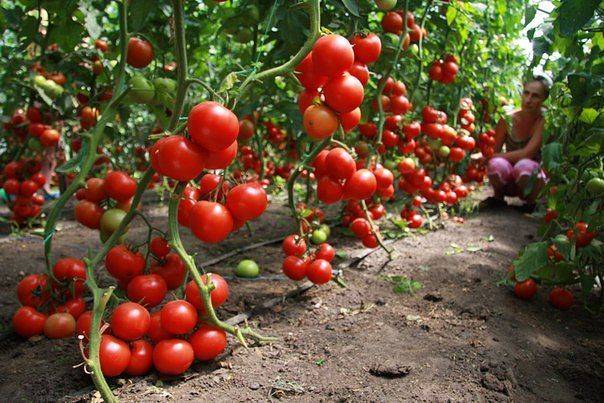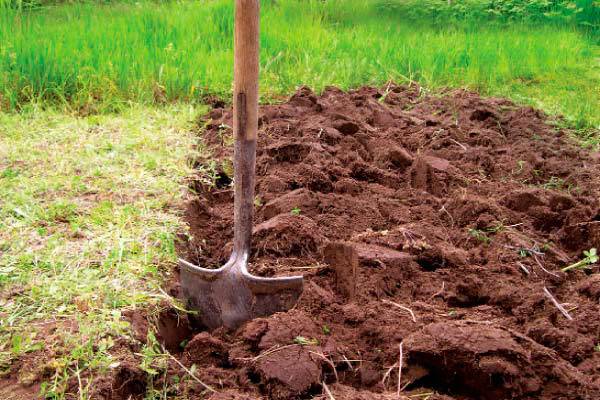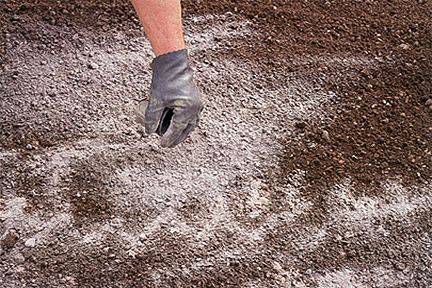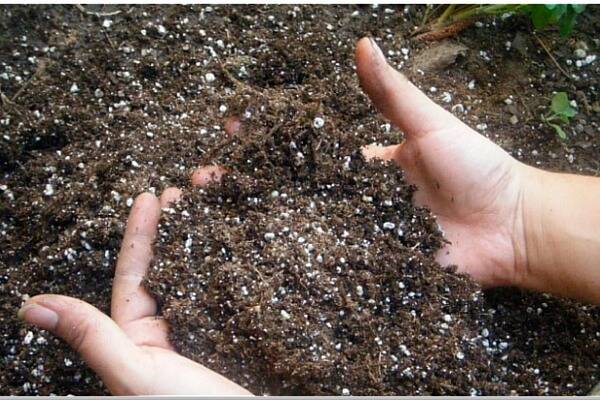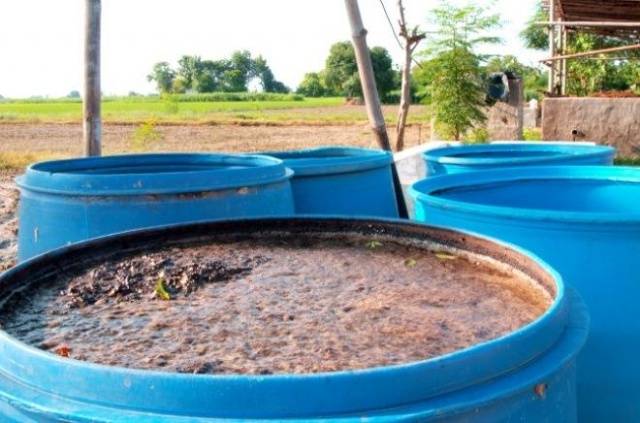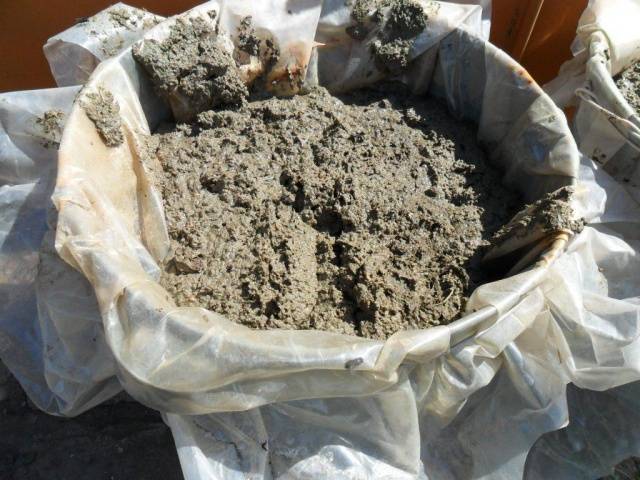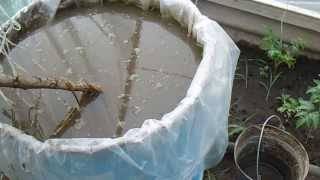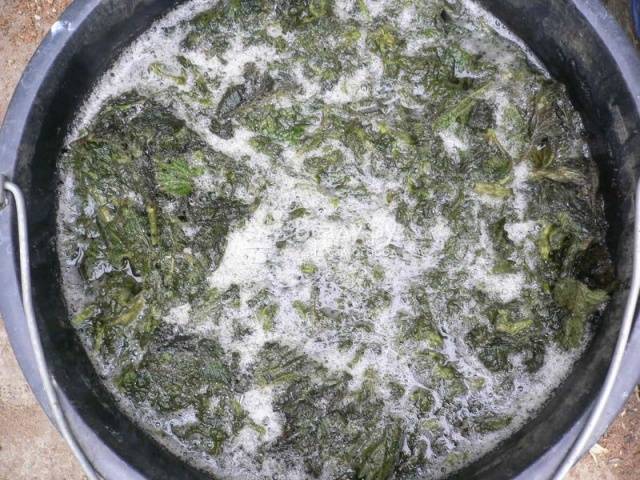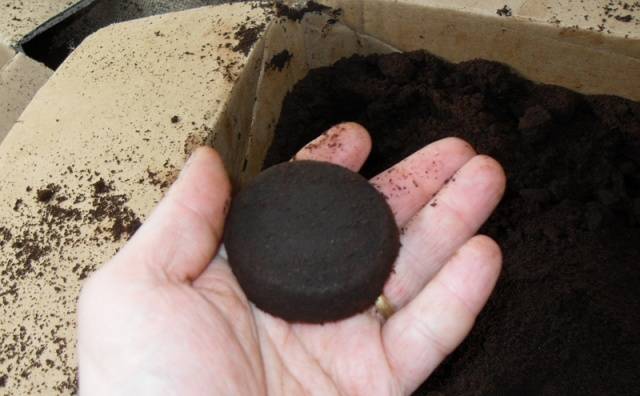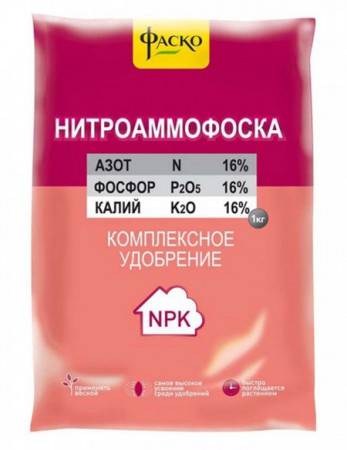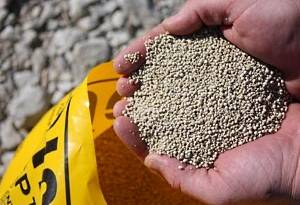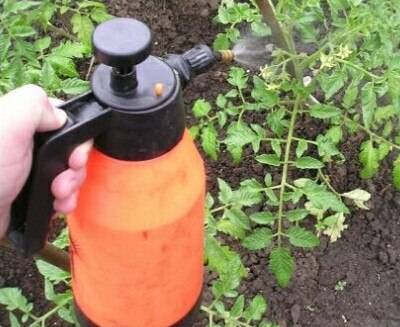Content
Tomatoes can be safely called gourmets who prefer to grow on fertile soil and regularly receive nutrients in the form of top dressing. Only with a varied and regular diet, the culture is able to please with high yields and good taste of vegetables, even when grown outdoors. The substances necessary for tomatoes in one or another amount are contained in organic, mineral, complex fertilizers. Top dressing of tomatoes in open ground should be carried out in compliance with some rules that will not harm the plants, but make them stronger.
Soil fertility
Soil fertility is a key factor in growing tomatoes. The soil must contain all the necessary trace elements that will contribute to the development of the root system, successful plant growth, abundant education ovaries and the timely ripening of fruits.
Prepare the soil for growing tomatoes in advance in the fall. In the absence of such an opportunity, preparatory measures should be carried out in early spring.
Seat selection
To grow a tomato, it is very important to find the right place in the garden. The site should be well lit by the sun for at least 6 hours a day. Constant drafts and wind should not be present on it, as this can destroy the plants. It is advisable to plant tomatoes in the place where cucumbers, onions, legumes or cabbage used to grow. After nightshade crops, tomatoes can only be grown after a few years. This is due to the fact that all nightshade vegetable plants are exposed to the same pests, the larvae of which remain in the soil for a long time.
Tomatoes prefer to grow in well-drained soils with deep groundwater. Swampy or flooded areas of land are not suitable for tomatoes.
Beds for tomatoes in unprotected ground should be formed from west to east. This will allow the soil to warm up evenly. The width of the ridges depends on the tomato planting scheme, however, with a width of more than 1.5 meters, it is difficult to care for the plants.
The height of the beds can be different. In the northern regions, it is preferable to grow tomatoes in warm, high beds, in the thickness of which a layer of organic matter is laid. When decomposed, this organic matter will generate heat and fertilize the plants.
Autumn preparation of the land
It is necessary to prepare the soil for growing tomatoes on unprotected plots of land in the fall. For this, the soil is dug to the depth of the shovel bayonet. During digging, organic matter is introduced in the amount of 4-5 kg / m2... It can be both fresh and rotted manure, peat, compost.
Tomatoes are very sensitive to soil acidity. The optimum value for their cultivation is 6.2-6.8 pH. You can measure the indicator with a litmus test purchased at an agricultural store. If the acidity in the soil is exceeded in autumn, lime fertilizers, for example, chalk chalk, should be added. The rate of its introduction into the soil is 300-400 g / m2.
Soil preparation in spring
If it was not possible to carry out preparatory measures in the fall, then spring worries must be started with the introduction of organic matter. It must necessarily be decomposed manure or humus that does not contain aggressive nitrogen. Fertilizer is applied while digging the soil. In this case, liming of the soil is also carried out in early spring.
Subject to the rules of autumn soil preparation, in the spring it is only necessary to loosen the top layer of the earth. Heavy loamy soils should be dug again to a depth of 10-15 cm.
Before digging or loosening, in the spring it is necessary to add superphosphate and potassium salt to the soil. The amount of substances should be 70 and 20 g / m2 respectively. This fertilizer for tomatoes is used before planting, which allows them to root better.
The soil must be leveled with a rake and landing holes made on it. Planting density depends on the height of the plants. So, between tall tomatoes, the distance should be at least 50-60 cm; for low-growing varieties, this parameter can be 20-30 cm.
Fertilizers after planting
The first application of fertilizers under the root of tomatoes on open plots of land is carried out no earlier than 10 days from the day of planting. Until that time, tomatoes take root and feed on substances embedded in the soil at the stage of its preparation. During this time, plants slow down and sometimes stop their growth, arriving in a state of stress. If after 10 days the growth of tomatoes is not activated, then the first feeding is required. Subsequently, tomatoes must be fed every 2-3 weeks. The fertilization schedule must be drawn up in such a way that for the entire growing season the plants receive 3-4 root dressings. On scanty, depleted soils, the amount of dressing can be increased.
Foliar dressing in the form of spraying with nutrients, it can be carried out regularly at intervals of 2-3 weeks so that they do not coincide in time with the application of fertilizers at the root. When symptoms of a deficiency of a particular micronutrient appear, it is also recommended to carry out an extra feeding on the leaf. This will make it possible to compensate for the lack of a trace element in the shortest possible time.
Root dressing
As root dressings, you can use minerals, organics and complex fertilizers for tomatoes:
Organics for tomatoes
Most gardeners try to use organic matter for fertilizing tomatoes, for example, manure, humus, peat, compost. They contain a lot of nitrogen, which stimulates plant growth. That is why it is recommended to use organic matter for the first feeding of tomatoes, when the plants need to increase the green mass. At later stages of cultivation, organic matter is mixed with minerals or other products with a high content phosphorus and potassium.
Mullein
The most common organic fertilizer for tomatoes in the open field is cow dung. It is used to prepare a liquid infusion - mullein: a bucket of manure is added to 4 buckets of water. After stirring, the solution is kept warm for several days. The finished top dressing is diluted with clean water 1: 4 and used for watering tomatoes at the root. To prepare the infusion, you can use fresh mullein, because aggressive nitrogen decomposes during infusion. This fertilizer contains a lot of nitrogen and is excellent for feeding tomatoes at the stage of development and before the onset of abundant flowering... An example of the preparation and use of mullein is shown in the video:
During flowering and ripening of fruits, tomatoes require a lot of phosphorus and potassium. The nitrogen demand of plants is decreasing.However, on the basis of organic matter, you can prepare a complex top dressing by adding various minerals or ash:
- add a liter of cow dung and 10 g of nitrophoska to a bucket of water, after diluting the solution with water 1: 1, the fertilizer is ready to use;
- in water, with a volume of 10 liters, add 500 ml of mullein prepared according to the recipe above. Add boric acid (6 g) and potassium sulfate (10 g) to the resulting solution;
- dilute the finished mullein with clean water 1:10. Add 1 liter of wood ash to 10 liters of the resulting solution and, after insisting, use the resulting top dressing for watering tomatoes.
Mullein in any form must be used with care so as not to "burn" the plants. Before feeding, tomatoes should be watered abundantly with clean water.
Bird droppings
Chicken droppings or other poultry contains a significant amount of nitrogen, which is why it is strictly forbidden to use the fresh substance for feeding tomatoes. An infusion can be prepared from bird droppings. For this, a liter of droppings are added to 10 liters of water. After stirring and infusing, the droppings are additionally diluted with water until a tea-colored solution is obtained.
An example of the preparation of an infusion of chicken droppings can be seen in the video:
With all the statements that chicken droppings is a full-fledged replacement for complex fertilizer, you should not use it in its pure form during the formation of ovaries and fruiting of tomatoes. During this period, it is recommended to use droppings together with minerals: dilute 500 g of droppings in a bucket of water, add superphosphate (20 g) and potassium sulfate (5 g) to the solution.
Organic complex
Experienced gardeners practice the use of organic fertilizer obtained by mixing cow dung, poultry manure and minerals. Such feeding of tomatoes in the open field will saturate the plants with all the necessary microelements. You can prepare it by adding a glass of chicken manure and the same amount of cow dung to a bucket of water. After insisting, a spoonful of potassium sulfate and boric acid (7 g) should be added to the solution. Before use, the dressing must be diluted with water 1: 2.
Compost
Compost is an excellent, affordable and widely known organic fertilizer that can be used for feeding tomatoes as well. However, not many people know that compost can be obtained not only by a standard method, but also by an accelerated method, by mixing improvised products. So, on a bucket of grass you need to add half a glass of lime, the same amount of wood ash and a spoon urea... After adding water and infusing the solution for several days, the fertilizer is used to water the tomatoes.
Herbal infusion
Herbal infusion is another organic fertilizer useful for tomatoes. To prepare it, you need to grind a certain amount of grass and fill it with water. A variety of herbs can be used, but nettle is the most beneficial for plants. The infusion of quinoa, woodlice, chamomile, dandelion also shows itself well. One or more types of herbs can be used to create one portion of the infusion.
Shredded grass, covered with water, should ferment. To do this, you need to leave the container with the solution open for 10-12 days. After preparation, the solution should be filtered and diluted with water until a light brown liquid is obtained.
Organic fertilizers are environmentally friendly fertilizers, however, their use in high concentrations can harm tomatoes. The possible negative effect of organic matter can be prevented by reducing the concentration of solutions.
Top dressing of coffee grounds
Many experienced gardeners use folk remedies for fertilizing tomatoes. For example, you can use, in fact, canteen "waste".For example, potato peelings can be buried in the ground during autumn digging for subsequent decomposition. Coffee grounds are a ready-made fertilizer that contains nitrogen, phosphorus, potassium, magnesium and some other substances. The acidity of the coffee grounds is neutral, so it can be used for feeding tomatoes on any soil.
Fertilizing tomatoes with coffee grounds is easy. To do this, simply sprinkle the dried remains of the drunk coffee at the trunk of the plant and carefully seal them in the top layer of the soil, then pour water over the tomato.
There is another long-term way to prepare a fertilizer based on coffee grounds - composting. Compost is prepared from 2 parts of grounds, 1 part of straw and 1 part of foliage. After mixing, the compost is laid for reheating, covered with a film or a layer of soil. After 3 weeks, the fertilizer is ready for use.
You can learn more about the use of fertilizer based on coffee grounds in the video:
After using such a top dressing, tomatoes receive all the substances they need for themselves. Coffee grounds attract earthworms, which loosen the soil, saturating it with oxygen and allowing the roots of the plant to breathe freely.
Feeding with yeast
For root feeding of tomatoes in unprotected soil, you can use baker's yeast. The product contains a lot of useful vitamins and minerals, they are natural plant growth activators. During fermentation, yeast gives off gases and heat, which also has a beneficial effect on tomatoes.
To prepare yeast fertilizer, add 200 g of baker's yeast to a liter of warm water. You can speed up fermentation by adding a few tablespoons of sugar or jam to the solution. At the stage of active fermentation, it is necessary to add 5-6 liters of warm water to the resulting concentrate and use top dressing for watering tomatoes.
After yeast feeding tomatoes begin to grow actively and form ovaries abundantly. You can water tomatoes with this solution no more than 3 times during the entire growing season.
Mineral fertilizers
For normal growth and abundant fruiting, tomatoes require nitrogen, potassium, phosphorus and some other trace elements. All of them are contained in special complex preparations for feeding tomatoes. However, you can "collect" such fertilizer yourself by mixing various chemicals.
Ready-made mineral complexes
Going to a specialized store, you can see a lot of ready-made mineral mixtures for fertilizing tomatoes. All of them contain the necessary complex of not only basic, but also additional minerals: calcium, magnesium, boron and others. Use them in accordance with the instructions.
Among the various mineral complexes for feeding tomatoes, it is necessary to highlight:
- Nitroammofosk. Gray granules containing all trace elements necessary for tomatoes in a balanced amount. Mineral fertilizer is excellent for feeding tomatoes in unprotected soil. Its cost in comparison with other complex fertilizers for tomatoes is affordable and saves money.
- Kemira station wagon-2. Complex fertilizer is used for root feeding of tomatoes at all stages of cultivation. The application rate of the substance for feeding tomatoes is 150 mg / m2. The fertilizer is embedded in the soil in a dry form along the perimeter of the tomato trunk. The granules dissolve during irrigation, supplying nutrients to the plants.
- Station wagon. This fertilizer also contains potassium, phosphorus, nitrogen and other minerals necessary for growing tomatoes. To prepare the fertilizer, add 5 g of the substance in 1 liter of water.
- Solution. The mineral complex contains tons of nutrients that are good for tomatoes. Substances are completely soluble in water and easily absorbed by tomatoes.
It is worth noting that such mineral fertilizers as calcium nitrate, ammophos, nitroammophos and some others do not contain trace elements in a full complex, which means that their use requires additional introduction of the missing mineral.
Preparation of mineral compositions
By purchasing various minerals and combining them yourself, you can effectively feed tomatoes and save money at the same time.
There are a lot of recipes for the preparation of mineral fertilizers, some of them are given below:
- Nitrogen-containing top dressing for tomatoes at an early stage of cultivation can be prepared from ammonium nitrate. To do this, dilute 1 spoonful of the substance in a bucket of water;
- Complex fertilizer for tomatoes at the stage of ovary formation and fruiting can be prepared by mixing nitrophoska and potassium humate. Add 15 g of each substance to a bucket of water.
- During active ripening of fruits, tomatoes require phosphorus and potassium. These substances can be introduced into the soil with the help of a fertilizer made from superphosphate and potassium chloride. Add 10 and 20 g of substances to a bucket of water, respectively.
Thus, various organic and mineral substances and their mixtures can be used to feed tomatoes under the root. The composition of the fertilizer depends largely on the vegetation stage of the plants. The amount of dressings per season depends on the fertility of the land and the condition of the plants. When symptoms of nutritional deficiencies are observed, extra root or foliar feeding can be carried out.
Foliar feeding of tomatoes
Outdoor care for tomatoes includes the use of foliar dressing. You can spray the leaves of tomatoes with nutrients many times per season with an interval of 10-15 days. For foliar feeding, you can use various minerals, folk remedies. Foliar dressing will make up for the lack of nutrients and protect the plant from diseases and pests:
- Before flowering, tomatoes in the open field can be sprayed with a urea solution. It can be prepared by dissolving 1 teaspoon of the substance in 10 liters of water;
- During the period of active flowering and the formation of ovaries, it is recommended to use a superphosphate solution for foliar feeding. The consumption of the substance is similar to the consumption of urea in the above recipe;
- Complex feeding of tomatoes can be carried out by spraying with a solution of boric acid, copper sulfate and urea. All of these substances should be added to a bucket of water in the amount of 1 teaspoon.
- Boric acid solution can be used at various stages of the growing season. It will saturate plants with boron and protect against some pests.
An interesting folk recipe for the preparation of foliar top dressing for tomatoes, based on the use of milk or whey and iodine. So, in 5 liters of water, you should add half a liter of milk and 5-6 drops of iodine. This product will protect tomatoes from diseases, pests and feed the plants with nutrients.
For feeding tomatoes "on a leaf", organic substances can also be used - a weak herbal solution, an infusion of wood ash. In the open field, using spraying, it is also possible to protect plants from late blight using "Fitosporin", "Phyto Doctor".
Conclusion
Tomatoes in open areas of land grow well only if the soil is sufficiently fertile. Making the soil nutritious is the main task of the gardener in the autumn and spring period before planting tomato seedlings.However, even with the introduction of a sufficient amount of organic matter and minerals, during the growing season, tomatoes will require additional input of nutrients, since over time the soil becomes impoverished and is unable to feed the tomatoes in sufficient quantities. In this case, various organic and mineral fertilizers, as well as some widely available substances and products, can be used for feeding. You can effectively feed tomatoes not only by watering at the root, but also by spraying the leaves. Only using a full range of measures with the use of various dressings can you get a good harvest of delicious vegetables.
